Get posts by email
Lepidoptera Love (Birds & the Bees too)
June 19, 2013
When the kids were little I enjoyed scouring children's publications for nature activities. For a couple years we subscribed to Ranger Rick and we would regularly borrow nature study books from the library. And then later I discovered blogs devoted to backyard science, often complete with resources lists and more links.

There is just so much out there to choose from.
These resources provided interesting, and sometimes even useful, starting points but mostly we just observed and enjoyed what was available to us in our urban backyard, weekly nature walks, trips to the farm, and weekend hikes. These were our main sources of inspiration for nature study.
As our kids outgrow the elementary years this is still the approach we take to nature study. Only now that we live in the woods there is so much more to study and the specimens come flying to our deck on a regular basis.
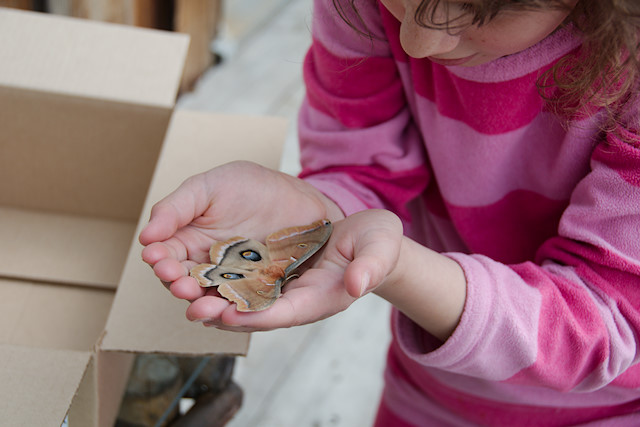
With summer's arrival the population of winged creatures around our home has exploded. Summer resident birds, emerging moths and butterflies, and of course the pesky biting insects we could live without, provide a plethora of nature study options. (Ok, we haven't studied mosquitos, though we have studied mosquito larvae in our pond studies.)
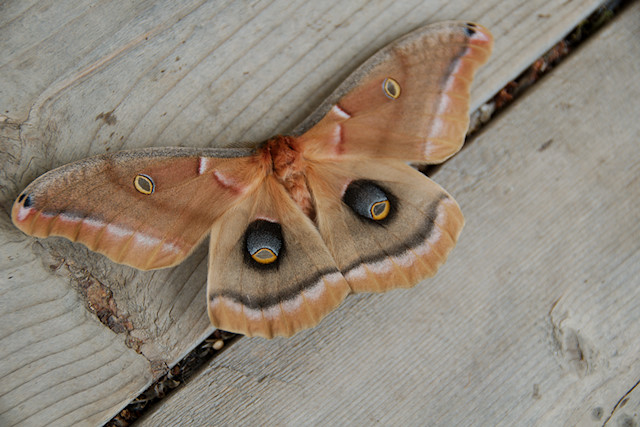
This weekend we had a very special visitor. Late at night we noticed a huge moth banging up against the window. At first glance I thought it was a wayward bat, it almost looked that big.
The next morning, as I was coming in the door from an early solo walk to the river, I found this beauty on the doorstep.
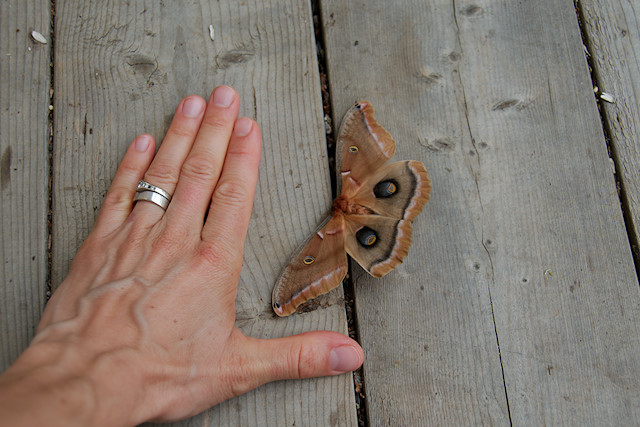
I safely stored him (yes it's a him, those furry antennae are on the males only to help them detect the female "come hither" pheremones) in a box until the kids got up.
Once my sleepyheads were awake (it's summer break!) we googled "eye spot moths", determined the species - Anthera polyphemus - and then had fun connecting the dots from what we knew to what we didn't know about this moth.
Turns out this big beauty is the grown up version of a rather large green caterpillar we found last summer, photographed here on Laurent's face. Oh that photo gives me the creeps.
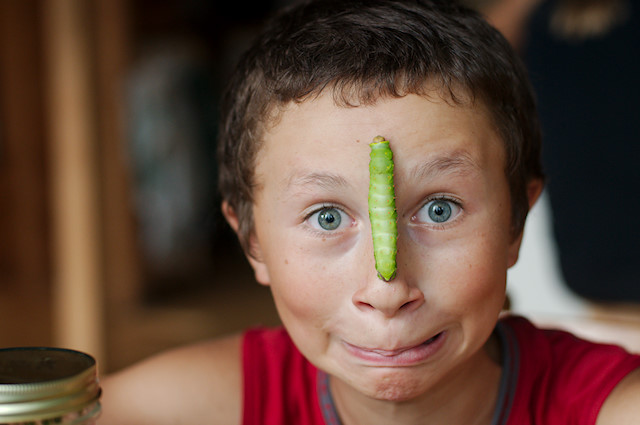
We're not sure if this is the same individual because things get fuzzy here. The story that is, not the caterpillar.
Every summer Laurent and Brienne collect lepidoptera larvae - caterpillars - and study them in jars before returning them to the wild. (If you do this make sure to provide food for your larvae!)
In the late summer and early fall these larvae will often pupate and we watch them spin cocoons and create chrysalis' in which the pupa overwinter.
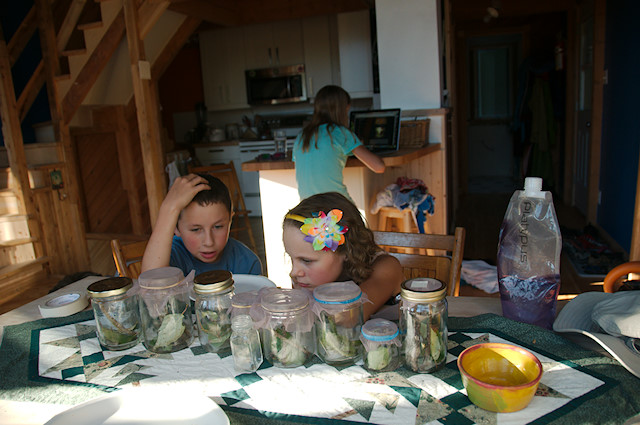
Over the course of a winter these jars are shuffled around the cold spaces of our home, on storeroom shelves or under the front porch; and are sometimes misplaced. Of the jars that are still around come spring, very few adults actually emerge.
This jar was kept under our snowy porch all winter. I forgot about it under there, covered as it was by sleds and crazy carpets.
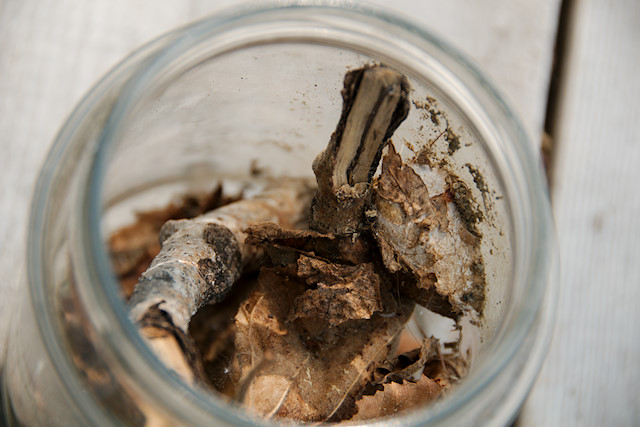
The jar was uncovered with the spring thaw and was placed on the front deck, where it has sat, kept dry under the eaves, for the duration of spring and early summer.
This particular cocoon, from an unidentified and forgotten larvae looks an awful lot like the polyphemus cocoon. It's been sitting on the porch, the same porch where we discovered the adult moth. But... we can't find the exit hole (is that what they call it?) on the cocoon, and we are reluctant to poke around too much in case there is still a pupa in there.
In my internet wanderings to identify this moth I happened upon Wormspit. A site all about silk worms. Polyphemus is a silk worm.
I follow a couple homesteader bloggers who raise sheep to harvest their wool. These people card, spin, dye and knit with this wool. Did you know people (and not just Chinese silk producers) raise moths for the same purpose, to produce fiber? Only they don't knit with silk but do fine embroidery.
People do this as a hobby and a craft right here in North America. Well, I'll be...
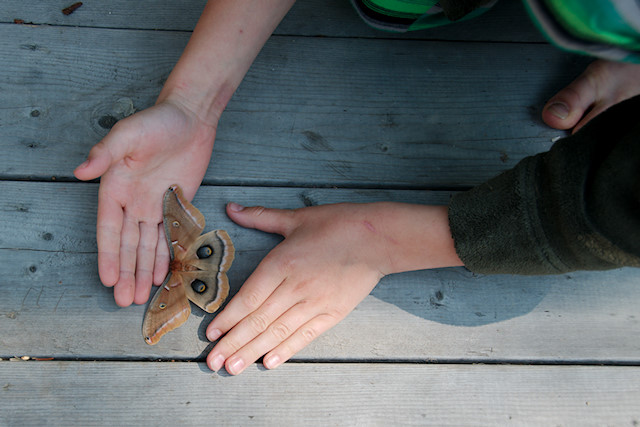
I was completely fascinated by this - the art and the science of silk production. While my kids ate their breakfast and discussed Minecraft strategy I kept interjecting, "and you'll never believe this..."
The world is an amazing place. That's the point of nature study, to discover this amazing-ness.
I awake each day wondering, "What will I learn today? What beautiful thing will I see?"
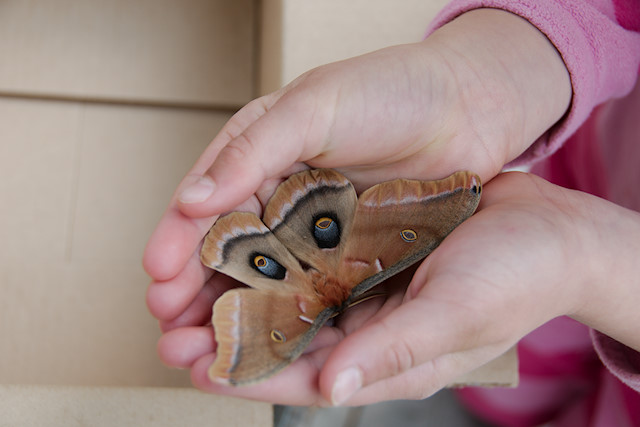
This is how we approach life and how we approach learning.
What beauty awaits us today? What beauty awaits you?
Resources:
When our kids were little we liked the Peterson First Guide to Butterflies and Moths and the caterpillar book also. This is a beautiful coloring book to go along with the guides. Eastern Butterflies is a more comprehensive guide.
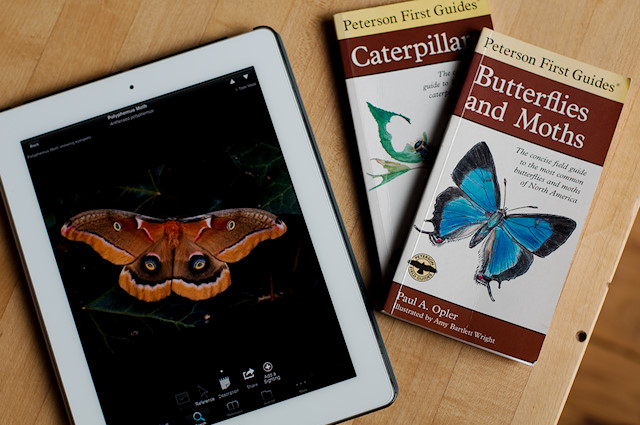
Nowadays we prefer apps and of course use Google extensively.
Over the years we have loved to study Monarchs and have written about that experience here and here.
Filed Under
Resource Library
-

Susan on June 19, 2013, 4:21 p.m.
There is a good middle grade book called Project Mulberry about 2 kids who raise silkworms and then do embroidery with the silk thread for a project for a fair. It might be a good complement to this research!
-

Beth on June 20, 2013, 4:28 a.m.
Our dd is crazy about butterflies, moths, and caterpillars. This morning, she found a wing to a Luna Moth. The other day, she found a wing to a "as yet unidentified" butterfly. In the summer, we raise caterpillars in jars on our table. So, today, she told me that she's a naturalist, and I took her and her brother to a wonderful butterfly place. When we arrived home, we found this beautiful and inspiring post. Thank you for the book recommendations and the post.
You can subscribe to comments on this article using this form.
If you have already commented on this article, you do not need to do this, as you were automatically subscribed.






Amanda on June 19, 2013, 1:17 p.m.
Oh my gosh, I love that photo of Laurent with the caterpillar on his face!